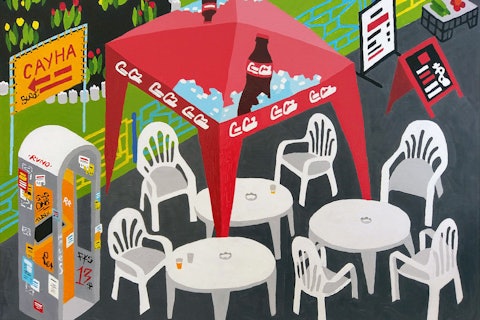
(Un)Broken Things: How Artist Glen Martin Taylor Heals with His Pottery
Several centuries ago, the Japanese came up with kintsugi, a technique for mending broken ceramics. The pieces were glued back together with the urushi tree resin mixed with powdered gold or silver. According to one theory, the technique emerged in the 15th century, when a shogun asked Chinese craftsmen to repair his cup, and their job didn’t satisfy him in terms of aesthetics. When Japanese artisans tackled the task, they glued the cup with the urushi lacquer, making it elegant and even more beautiful than it was. In the 17th century, the technique became so well-liked that people started deliberately breaking their kitchenware.
Kintsugi also made its way to the West. In 2009, an exhibition of mended pottery was held in Washington DC’s Freer Gallery of Art. Jewellery brands draw inspiration from its aesthetics to this day, and even Kylo Ren’s helmet in Star Wars: The Rise of Skywalker was designed to look like it.
However, kintsugi is not just about mending cracked ceramics. It is perfectly in line with the Japanese concept of wabi-sabi, the beauty of imperfect. It deals not only with aesthetics. According to this philosophy, you need not hide your scars, including the spiritual ones, but recognize them as an important part of your life. The scars left where the wounds used to be can become a reminder of one’s indomitability.
American artist Glen Martin Taylor works with cracked pottery, too, but relies on the materials not as sophisticated as resin and powdered gold, e.g., chains, barbed wire, adhesive tape, and nails. He told Bird in Flight how kintsugi helps people accept themselves.

A pottery artist living in the US state of Ohio.
— My first artistic work was a pencil drawing — at 10 years old, I drew an old man’s portrait that garnered much praise from my teacher at the time. So, it’s safe to say that I started making art as a child. I switched styles many times throughout my life. First, I tried my hand at minimalism, then at abstract painting. I suffered one failure after another for a long time but kept working.
I visit a community pottery studio, where I make the ceramics from clay, and craftsmen there fire it for me. I wake up before sunrise, meditate, exercise, write, and then make art. I don’t work too hard, getting rest when needed and then returning to work. However, you can see me burn midnight oil now and then.





Many of my art pieces deal with the subject of being broken. No person gets through life unscarred. By visualizing the manifestation of my inner broken state, I can heal. If it helps someone else, it helps close the healing circle, too.
Many things around us seem convoluted and nonsensical, but art, perhaps, can help us make sense of our lives.
My works are about how imperfect we are. Many things around us seem convoluted and nonsensical, but art, perhaps, can help us make sense of our lives, find wholeness in our brokenness, and forgive ourselves for simply being humans.










New and best









